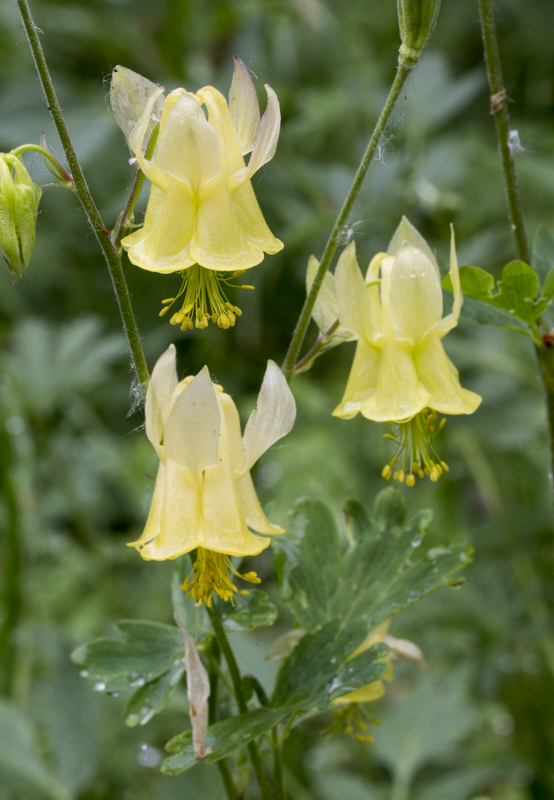
by hankinslawrenceimages | May 27, 2015 | Flowers, Montana, Ranunculaceae Family, Wildflowers
I was looking through my notes and realized I’ve edited but never shared several sets of wildflowers from my various trips. So I thought I’d start catching up with my photos of Yellow Columbine – aquilegia flavescens – taken at Glacier National Park. A member of the Buttercup (Ranunculaceae) family, Yellow Columbine is native to the western US states of Colorado, Idaho, Montana, Oregan, Utah, Washington and Alaska. It is also native to the western provinces of Canada. This beautiful summer blooming flower has soft cream to yellow flowers on a plant that grows to 3 feet tall. It prefers to grow in mountain meadows and alpine slopes. The ones I photographed at Glacier National Park were a lovely shade of yellow.

Yellow Columbine – Aquilegia Flavescens © 2012 Patty Hankins
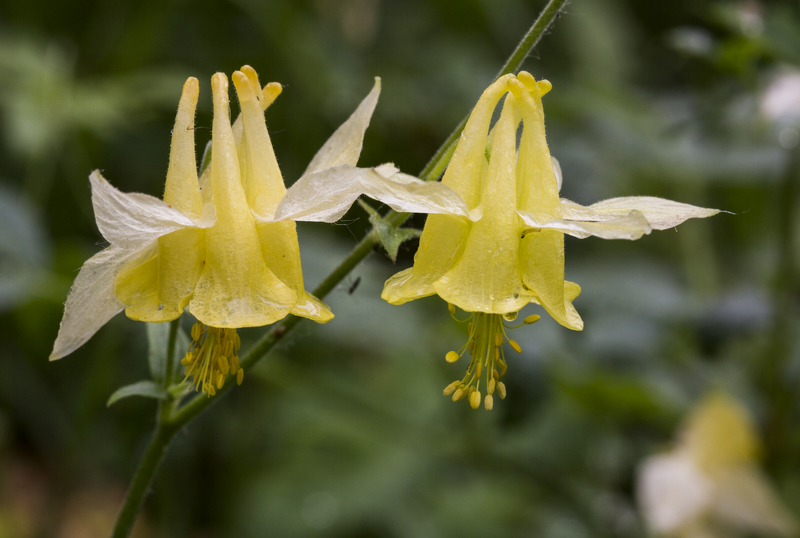
Yellow Columbine – Aquilegia Flavescens © 2012 Patty Hankins
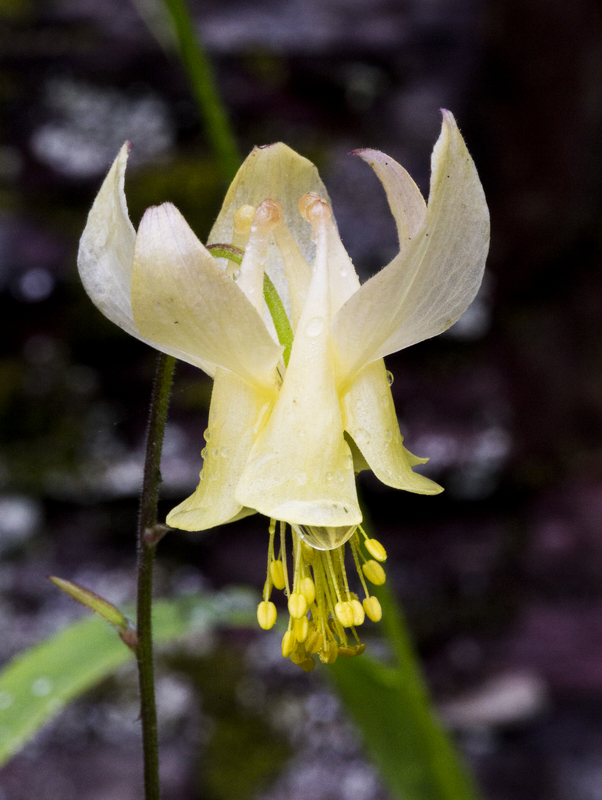
Yellow Columbine – Aquilegia Flavescens © 2012 Patty Hankins
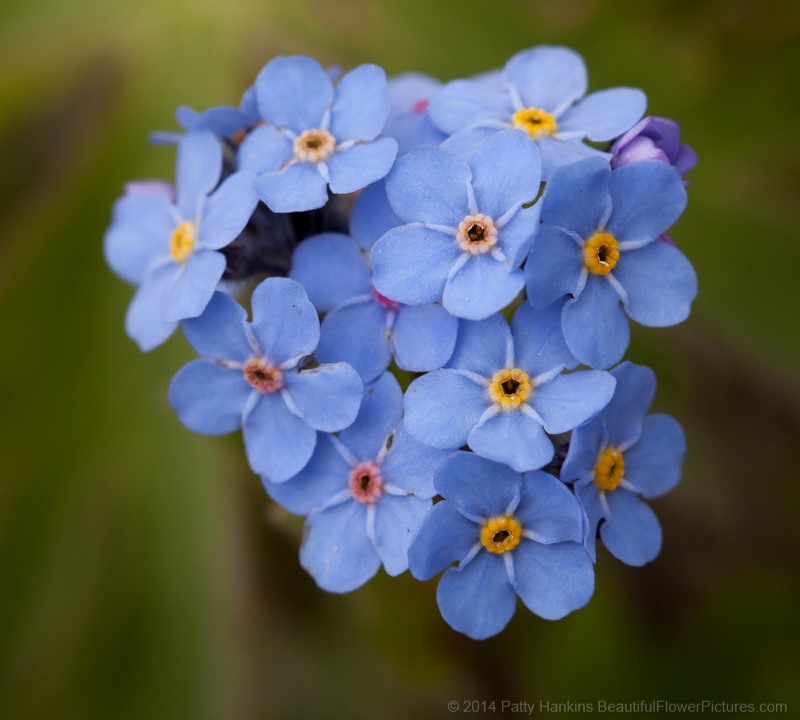
by hankinslawrenceimages | Oct 1, 2014 | Boraginaceae Family, Flowers, Montana, Wildflowers
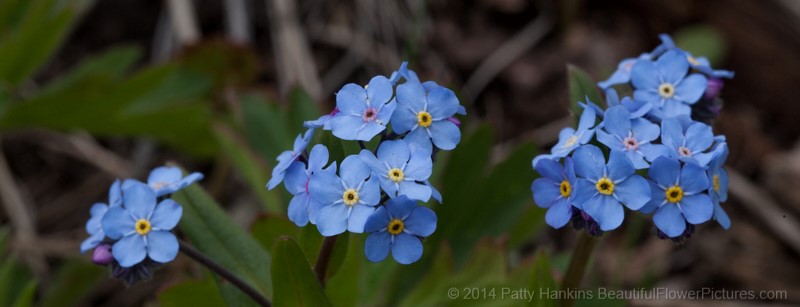
Mountain Forget Me Not © 2014 Patty Hankins
One of the beautiful wildflowers I discovered at Yellowstone National Park a few years ago was Mountain Forget-Me-Not (myosotis asiatica). The delicate little blue flowers were wonderful to see in the grand landscapes of Yellowstone.
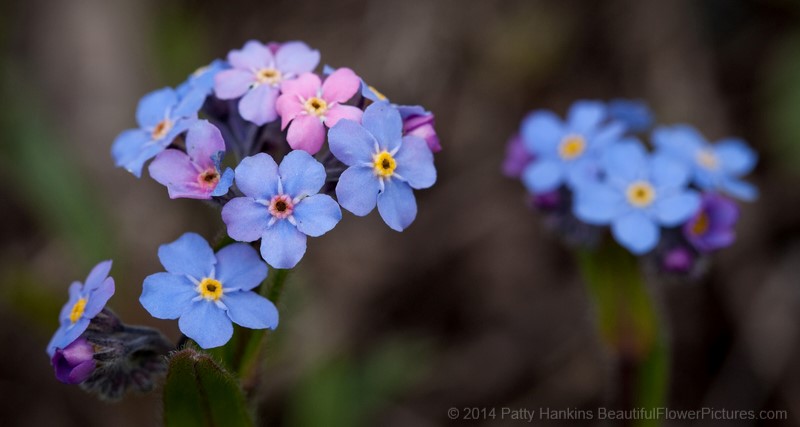
Mountain Forget Me Not © 2014 Patty Hankins
Also known as Asiatic or Woods Forget Me Not, myosotis asiatica is a member of the borage family. It is native to Montana, Idaho, South Dakota, Alaska and British Columbia.
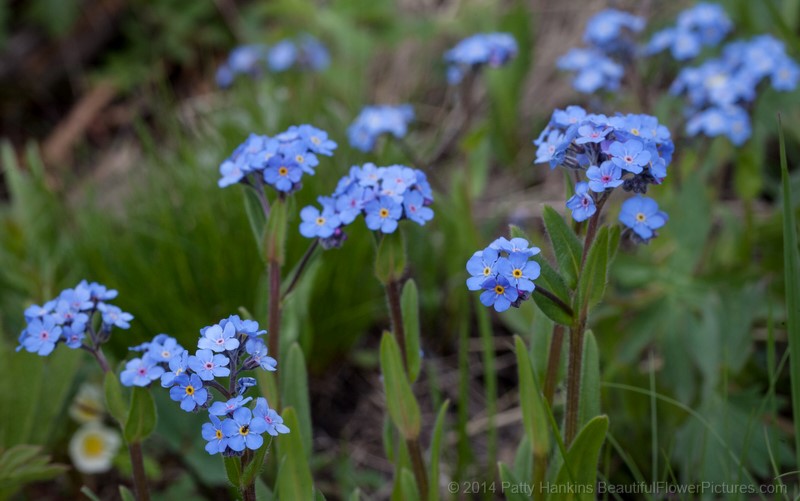
Mountain Forget Me Not © 2014 Patty Hankins
Mountain Forget Me Not can grow to as tall as 40 cm. The leaves are oblong to elliptical in shape. Flowers are very small (about 3-5 cm across) in a lovely shade of blue with pink and/or yellow centers.

Mountain Forget Me Not © 2014 Patty Hankins
Mountain Forget-Me-Not has been used medicinally over the years from being used in lotion form to treat eye diseases to being used to treat wounds when ground into a powder. As with all information about traditional uses of plants, I’m sharing it for informational purposes – not recommending it for a medical treatment. Please consult your doctor or other medical personal before using Mountain Forget-Me-Not as a treatment for any medical condition.
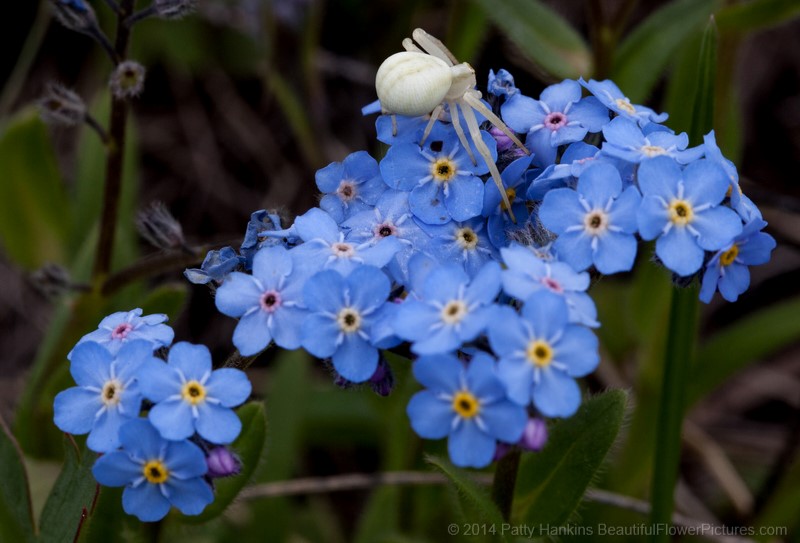
Mountain Forget Me Not © 2014 Patty Hankins
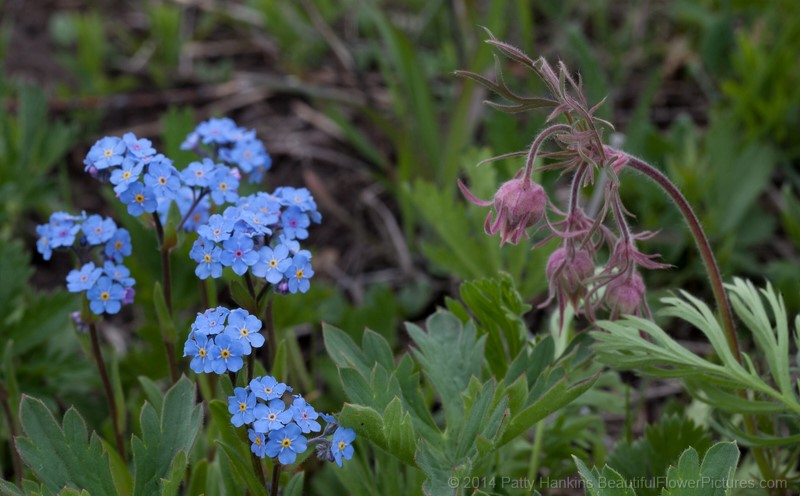
Mountain Forget Me Not and Prairie Smoke © 2014 Patty Hankins
In addition to the Mountain Forget-Me-Not that I photographed in Yellowstone National Park, I photographed what I believe is a related species at Grand Teton National Park. I haven’t been able to identify what this wildflowers is – but it certainly looks like another type of Forget-Me-Not. If you know what it is – I’d really appreciate it if you could let me know 🙂
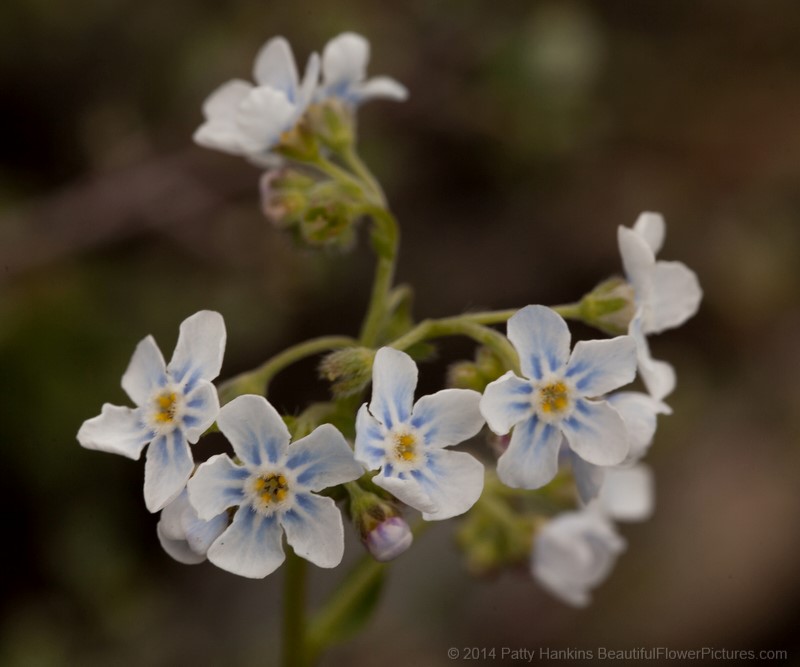
Forget Me Not © 2014 Patty Hankins
You can find more information about Mountain Forget Me Not at
USDA Plant Profiles
Montana Plant Life
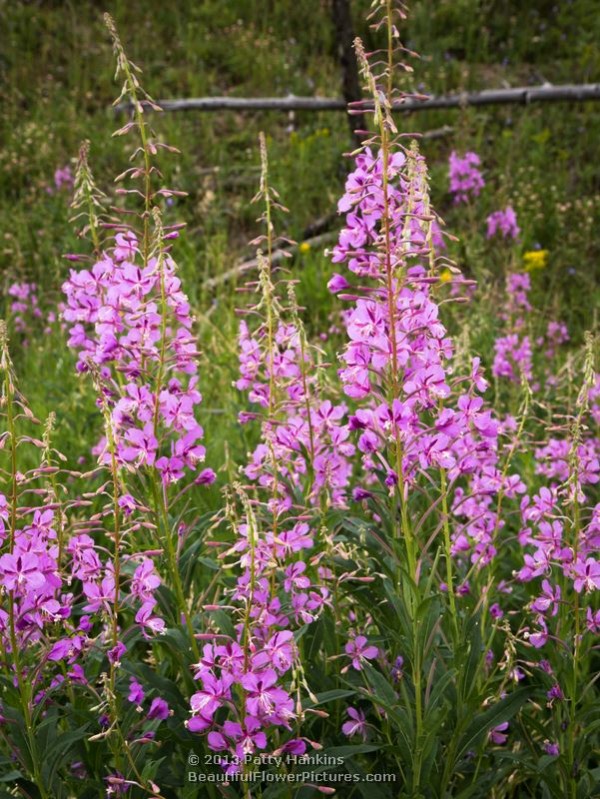
by hankinslawrenceimages | Aug 26, 2013 | Colorado, Flowers, Montana, Onagraceae Family, Wildflowers, Wyoming
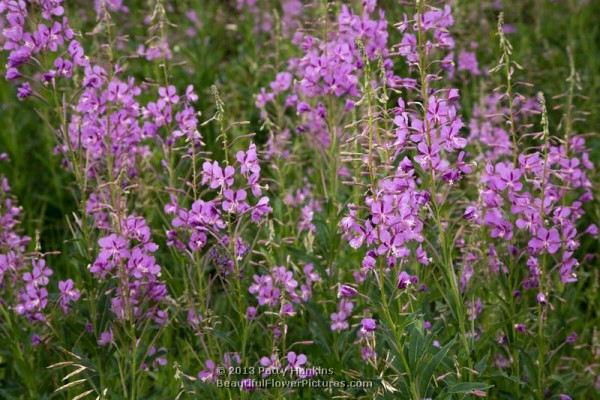
Fireweed © 2013 Patty Hankins
One of the wonderful western wildflowers I’ve photographed in several locations is Fireweed (chamerion angustifolium). The bright magenta flowers of this summer blooming member of the Onoagraceae (evening primrose) family are easy to spot. I’ve photographed it at Yankee Boy Basin in Colorado, and in Glacier, Yellowstone and Grand Teton National Parks.
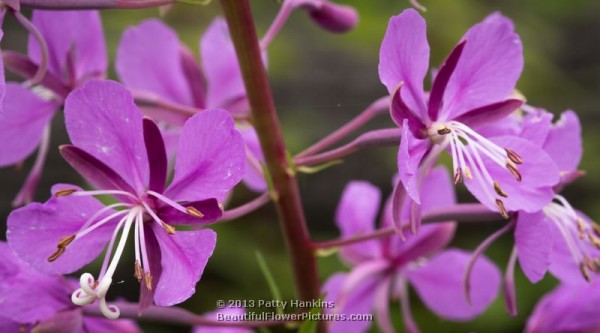
Fireweed © 2013 Patty Hankins
Fireweed is native to Canada and a few northern or mountainous states in the US, including Washington, Montana, Wyoming, Colorado, Minnesota and Indiana. Fireweed is also known as willow herb and french willow.
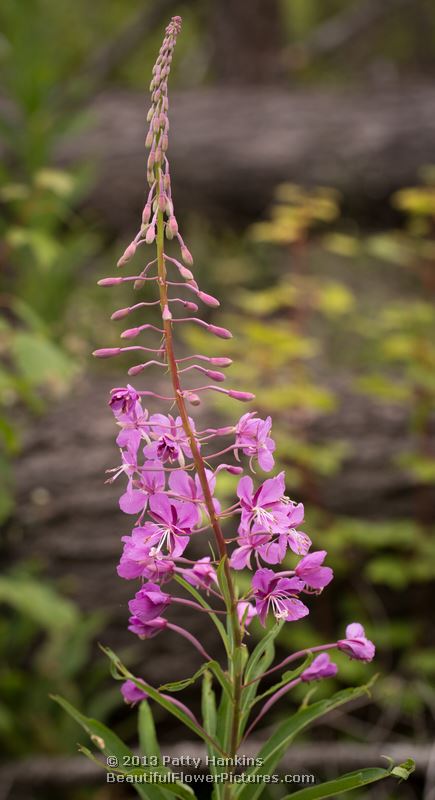
Fireweed © 2013 Patty Hankins
Fireweed can grow to a height of five feet tall. The bright magenta four petaled flowers are about an inch across. Stems are reddish with alternate leaves.
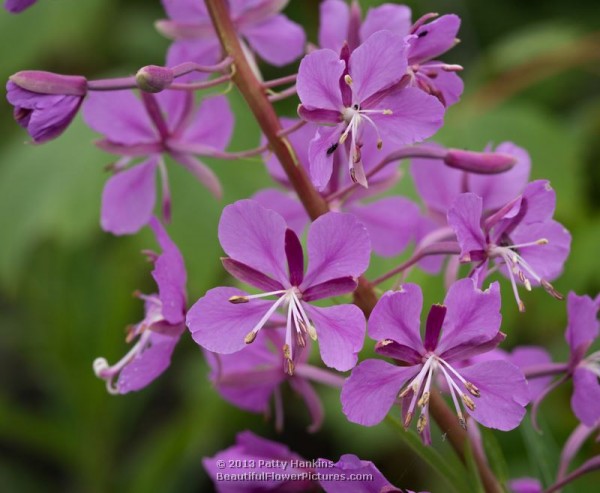
Fireweed © 2013 Patty Hankins
Fireweed grows in moist soil in areas with lots of sun. It is commonly found along roadsides and in clearings. It is one of the plants that first grows back in burned wooded areas – hence it’s name – fireweed.

Fireweed © 2013 Patty Hankins
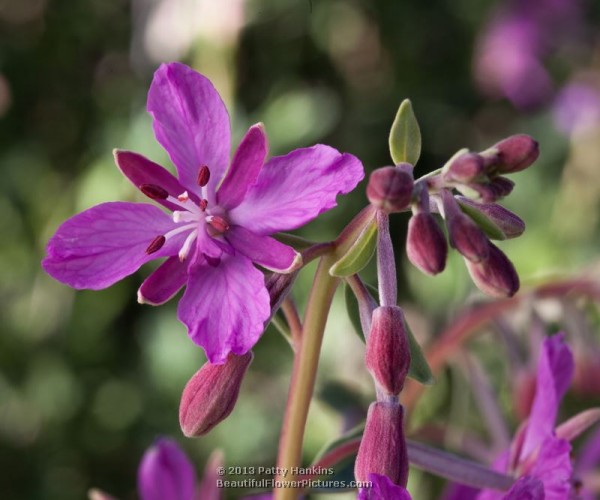
Fireweed © 2013 Patty Hankins
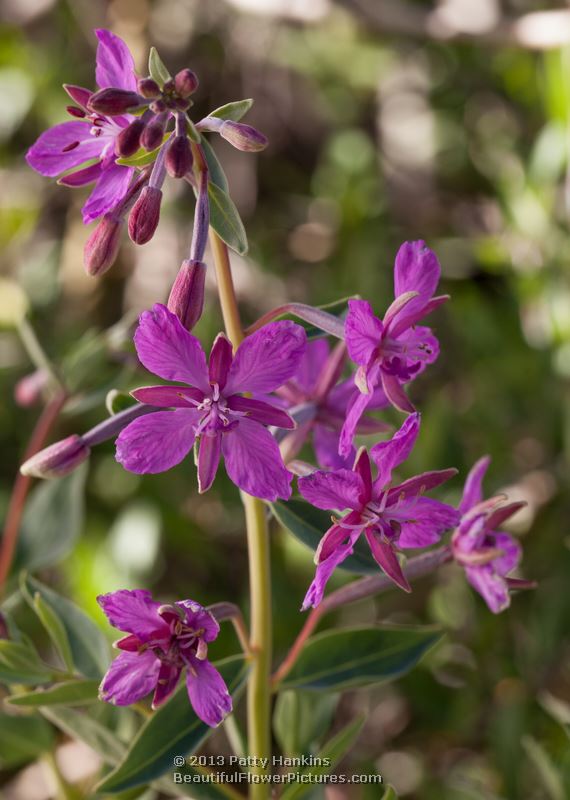
Fireweed © 2013 Patty Hankins
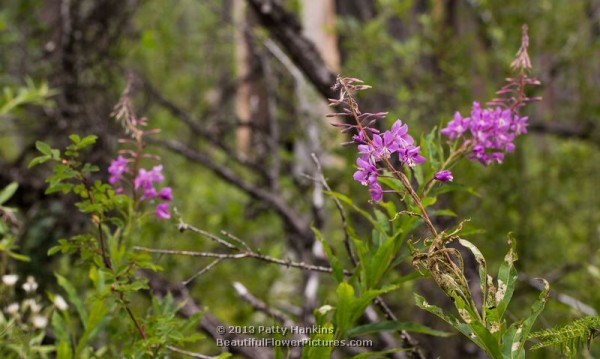
Fireweed © 2013 Patty Hankins
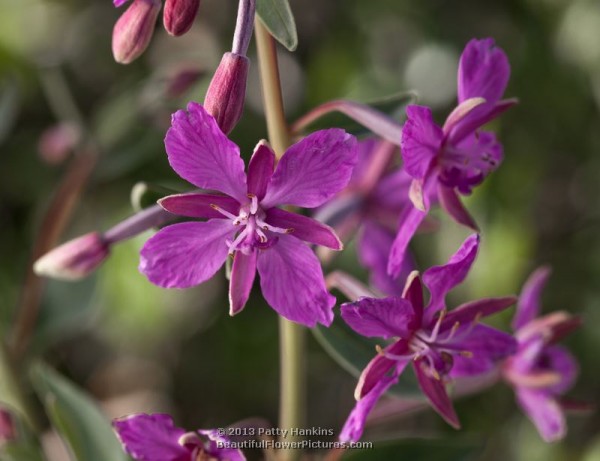
Fireweed © 2013 Patty Hankins
More information about fireweed can be found at
Lady Bird Johnson Wildflower Center
USDA Plant Profiles
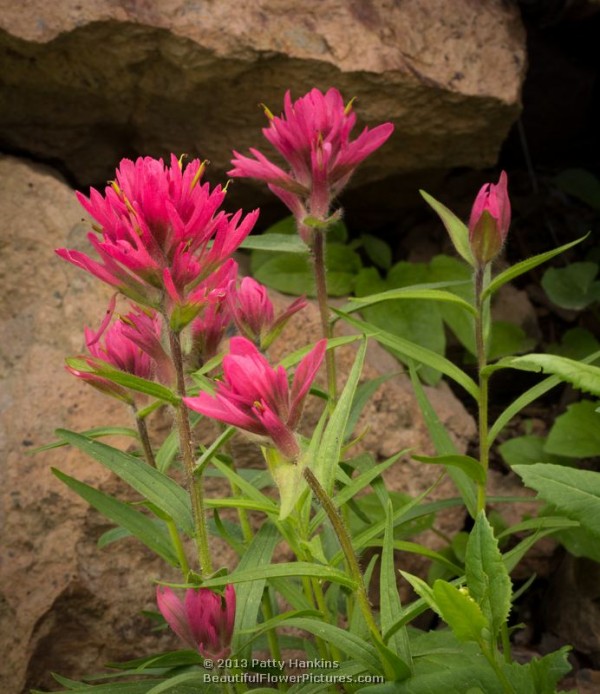
by hankinslawrenceimages | May 6, 2013 | Flowers, Montana, Orobanchaceae Family, Photo Locations, Wildflowers, Wyoming
There are many varieties of paintbrush flowers growing in the Western United States. I always love seeing them and photographing them – the challenge is identifying which one is which!

© 2013 Patty Hankins
From the descriptions I’ve read – I believe I photographed Alpine Paintbrush – castilleja rhexifolia – at both Glacier and Yellowstone National Parks. Of course – I very well may have misidentified them – since no two sources have similar photos for the same wildflower! So I apologize in advance if I’d misidentified which paintbrush these photos are of.
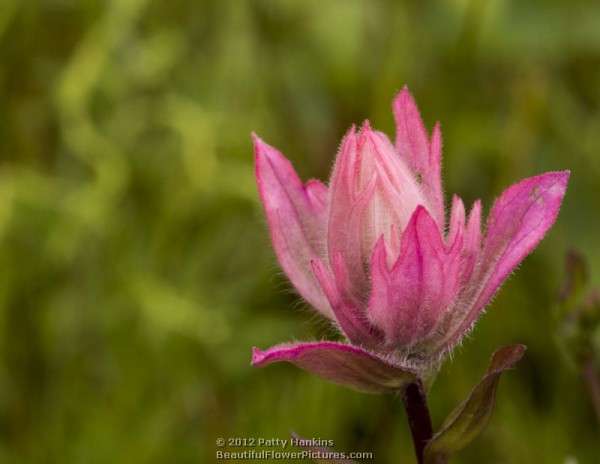
© 2012 Patty Hankins
Alpine Paintbrush are summer-blooming perennial members of the Figwort Family (scrophulariacaea). They grow to between 4 and 16 inches tall – and have bright pink or reddish flowers. I’ve found them in meadows and in open areas along the sides of the roads in the parks.
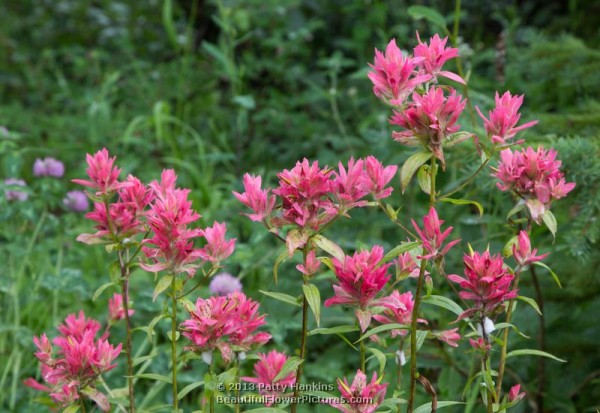
© 2013 Patty Hankins
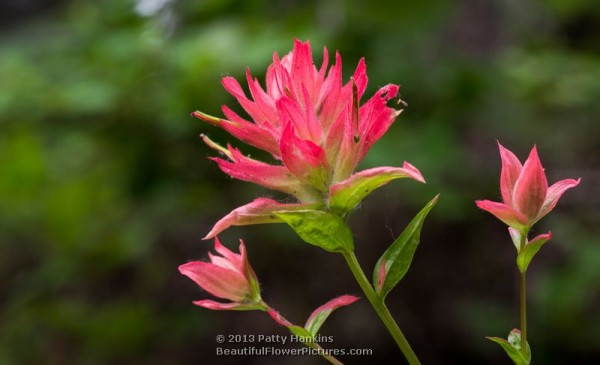
© 2013 Patty Hankins
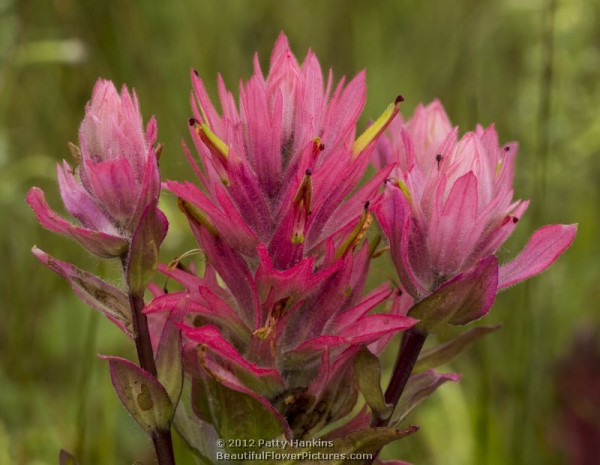
© 2012 Patty Hankins
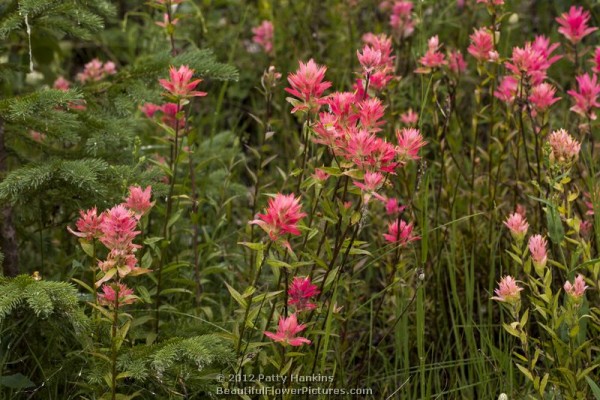
© 2012 Patty Hankins
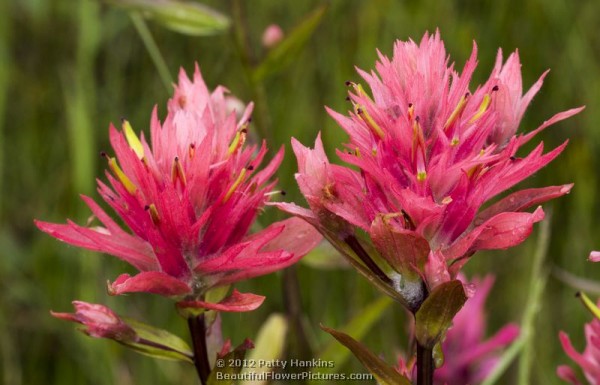
© 2012 Patty Hankins
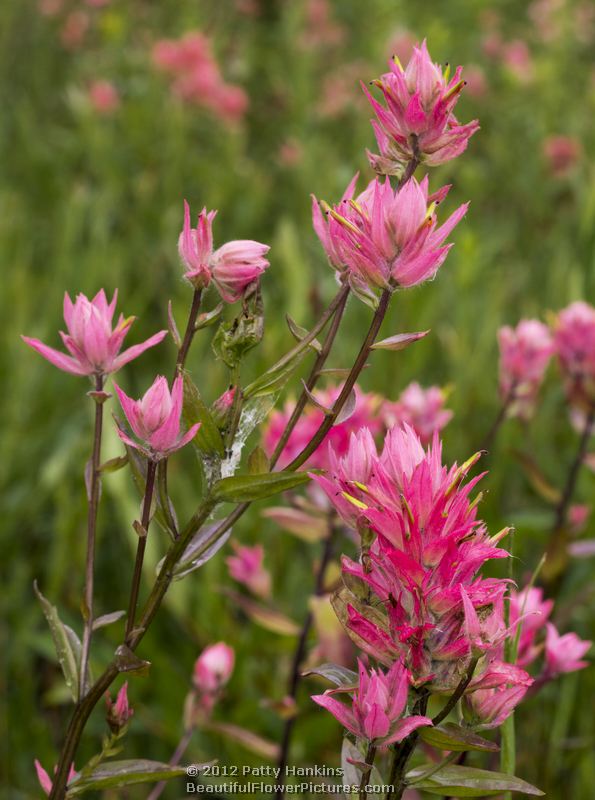
© 2012 Patty Hankins
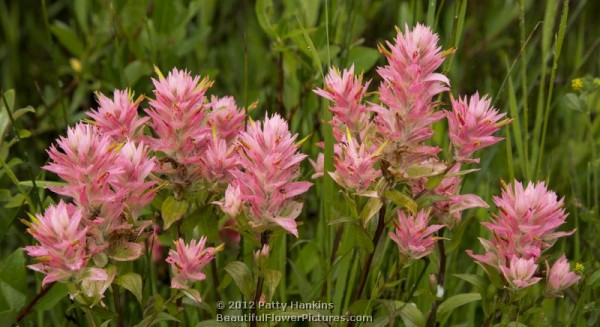
© 2012 Patty Hankins
I hope you’ve enjoyed my Alpine Paintbrush photos. Please feel free to share this post on social media.
by hankinslawrenceimages | Sep 5, 2012 | Flowers, Montana, Wildflowers
Continuing the series of posts with photos that were posted to Facebook while I was on the road this summer . . .
After a few wonderful days in Theodore Roosevelt National Park, I head to Glacier National Park in Montana. When I visited the park in late June last year – it was still covered with snow. Going to the Sun Road was closed – and I couldn’t get anywhere near Logan Pass.
What a difference 13 months makes . . . I arrived at Glacier National Park after the historic lastest date for Going to the Sun Road to open. I wanted to do everything I could to increase the chances that I’d actually be able to see the whole park this year. This year – the road through Logan Pass opened sometime in June. By the time I arrived – summer was in full bloom in the park. Without a doubt – Glacier is one of the most beautiful national parks I”ve ever visited.
The combination of lakes and mountains at Glacier are wonderful to photograph.
St. Mary Lake
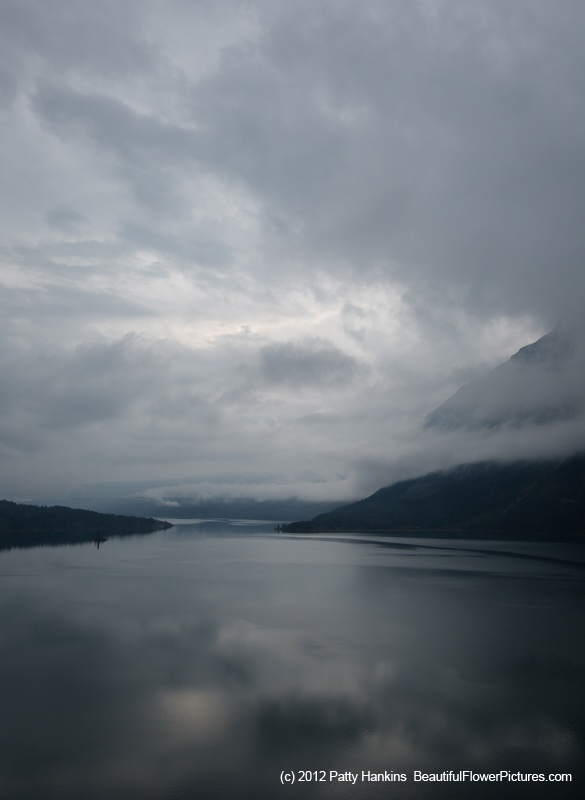 © 2012 Patty Hankins
© 2012 Patty Hankins
Lake McDonald
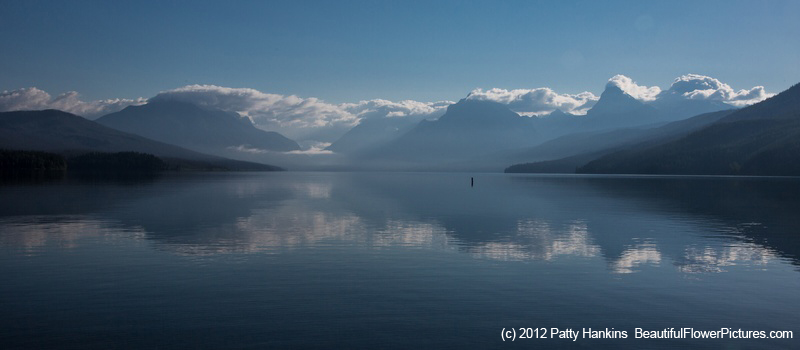 © 2012 Patty Hankins
© 2012 Patty Hankins
And the only thing more beautiful than the lakes and mountains were the wildflowers!
Yellow Columbine – aquilegia flavescens
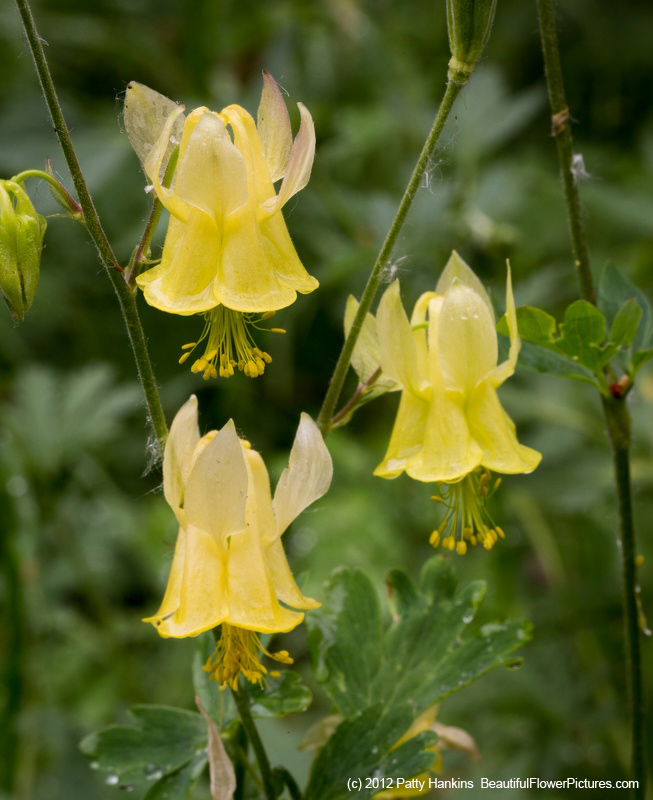 © 2012 Patty Hankins
© 2012 Patty Hankins
Cow Parsnip – heracleum maximum
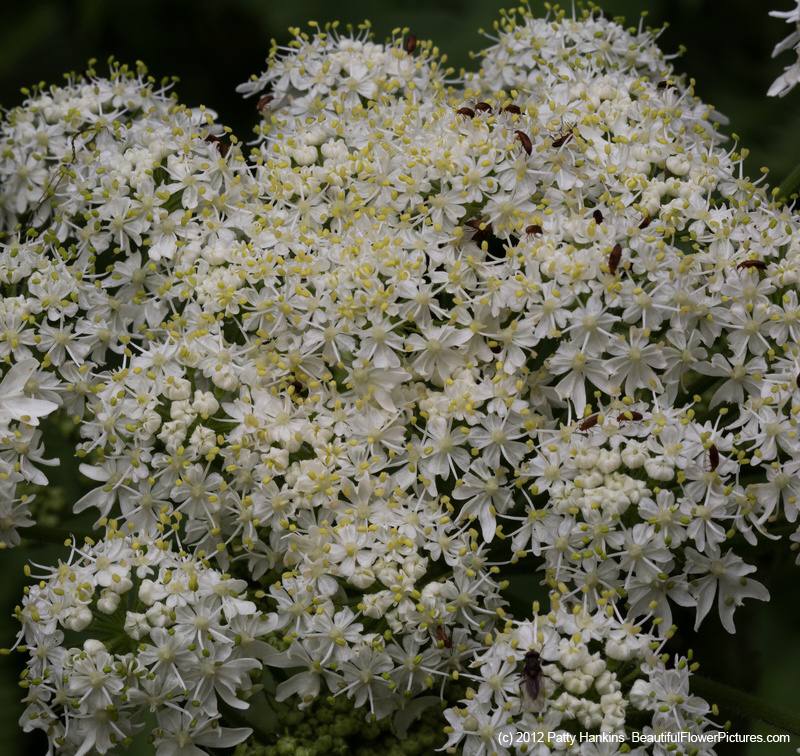 © 2012 Patty Hankins
© 2012 Patty Hankins
White bog orchid – platanthere dilatata
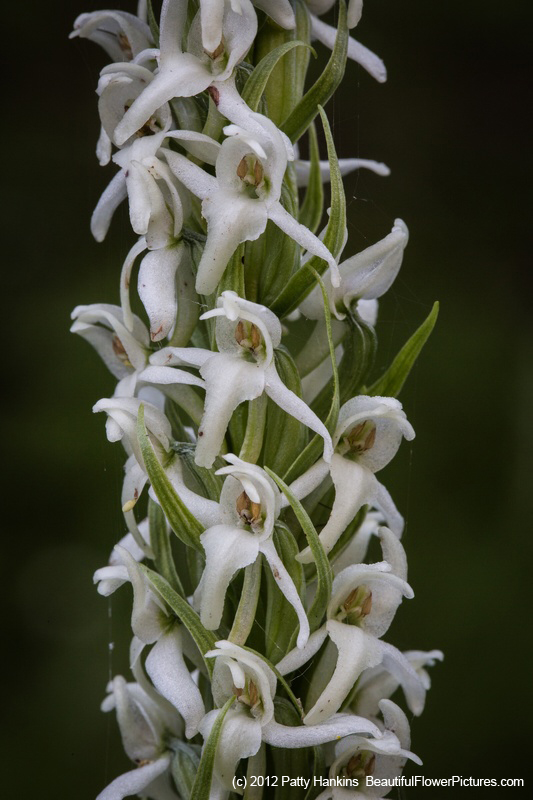 © 2012 Patty Hankins
© 2012 Patty Hankins
Sticky Geranium – geranium viscosissimum
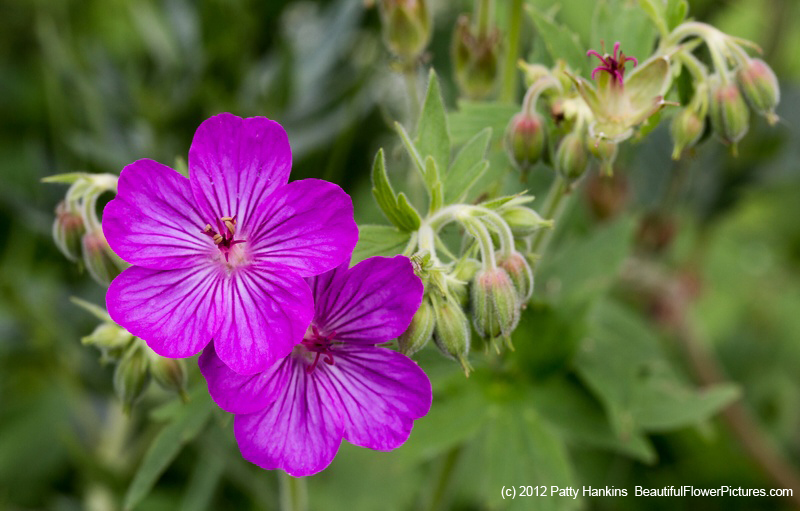 © 2012 Patty Hankins
© 2012 Patty Hankins
Orange Hawkweed
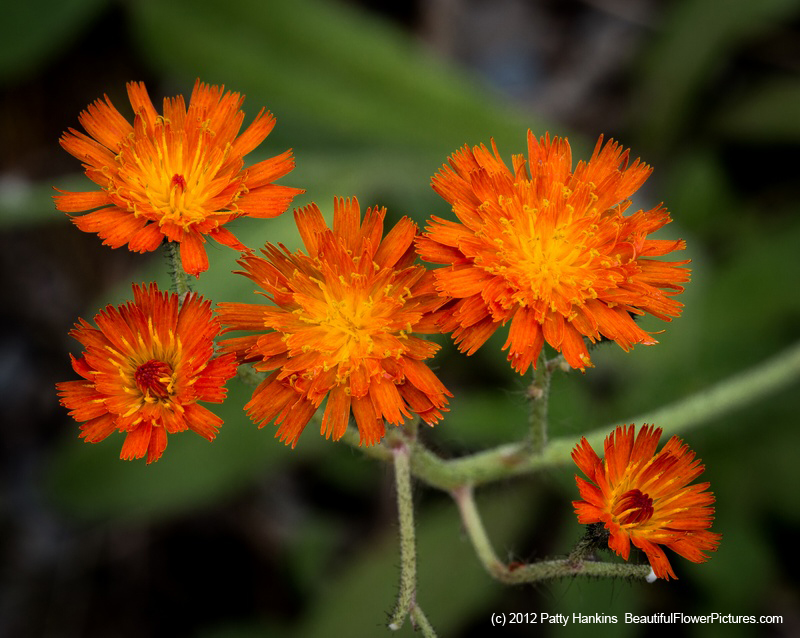 © 2012 Patty Hankins
© 2012 Patty Hankins
It’s probably not a surprise to anyone – I’m already dreaming of when I can next visit Glacier National Park!
by hankinslawrenceimages | Nov 28, 2011 | Flowers, Montana, North Dakota, Photo Locations, South Dakota, Wildflowers, Wyoming
Several people have asked me how I was able to identify all the different wildflowers I photographed on my trip west – especially since this was my first time seeing all these wildflowers. The answer is actually pretty straight forward – I bought several reference books before I headed west – and bought a few more while I was in the various parks. I’ve found that by searching amazon for the state or park name and wildflowers I can usually come up with at least some basic reference books before I visit a new area. And then I always visit park bookstores and other local bookstores to see what else I can find. I literally have a shelf full of wildflower identification books – and I’m always looking to add new ones to my collection.

Here’s what I added to my collection as a result of my trip west – and I’m sure I’ll add a few more next year . . . (links go to the books on Amazon – they are provided for your convenience – they’re not affiliate links).
Common Plants of Theodore Roosevelt National Park – Robert L. Sisk and Jan Tysdal-Sisk – includes grasses, trees, shrubs and exotic plants in addition to the native wildflowers. I bought it at the park – and it’s the best guide I found for that area.
Common Wildflowers of Grand Teton National Park – Charles Craighead – a handy little book I bought at Grand Teton. It is an official guidebook of Grand Teton National Park. There are several books in the series including Day Hikes and Short Walks of Grand Teton National Park, Wildlife of Grand Teton National Park and History of Grand Teton National Park. There may be others in the series – these are the ones I brought home with me. These books aren’t available on Amazon – you can order them directly from the Grand Teton Association website.
Tallgrass Prairie Wildflowers – Doug Ladd and Frank Oberle – includes wildflowers of the Prairie Midwest – so east of the parks I visited on this trip. It covers from eastern Manitoba – south to northeastern Oklahoma – east to western Tennessee and north to western Ohio. It’s my first book on wildflowers of this region – now I just need some parks to go visit so I can start finding these wildflowers to photograph.
Wildflowers of Glacier National Park and Surrounding Areas – Shannon Fitzpatrick Kimball and Peter Lesica – my favorite book for the wildflowers I found in Glacier National Park. The flowers are organized by color – which always makes it easier for me to identify wildflowers I find and have no clue what family they belong to.
Wildflowers of Grand Teton and Yellowstone National Parks – Richard J. Shaw – my favorite book for Grand Teton and Yellowstone. Organized by color, has the most common wildflowers and nice and light so easy to toss into my backpack.
Wildflowers of Montana – Donald Anthony Schiemann – includes 350 wildflowers in the mountains, plans and forests of Montana
Wildflowers of the Western Plains – Zoe Merriman Kirkpatrick – includes 186 species native to the western plains stretching from western Texas and eastern New Mexico in the south to Canada in the north.
Wildflowers of Wyoming – Diantha and Jack States – I got my copy for about $ 20 – no clue why the only copy listed on Amazon is on sale for over $ 900!!! It’s a good book – but I’m sure you can find a more reasonably priced copy elsewhere on the web is it’s still this overpriced on Amazon.
Since I’m planning on heading back to these areas again next year – do you have a favorite wildflower guide for the region that I should add to my collection before I go? If you know of any – please let me know. Thanks 🙂







































